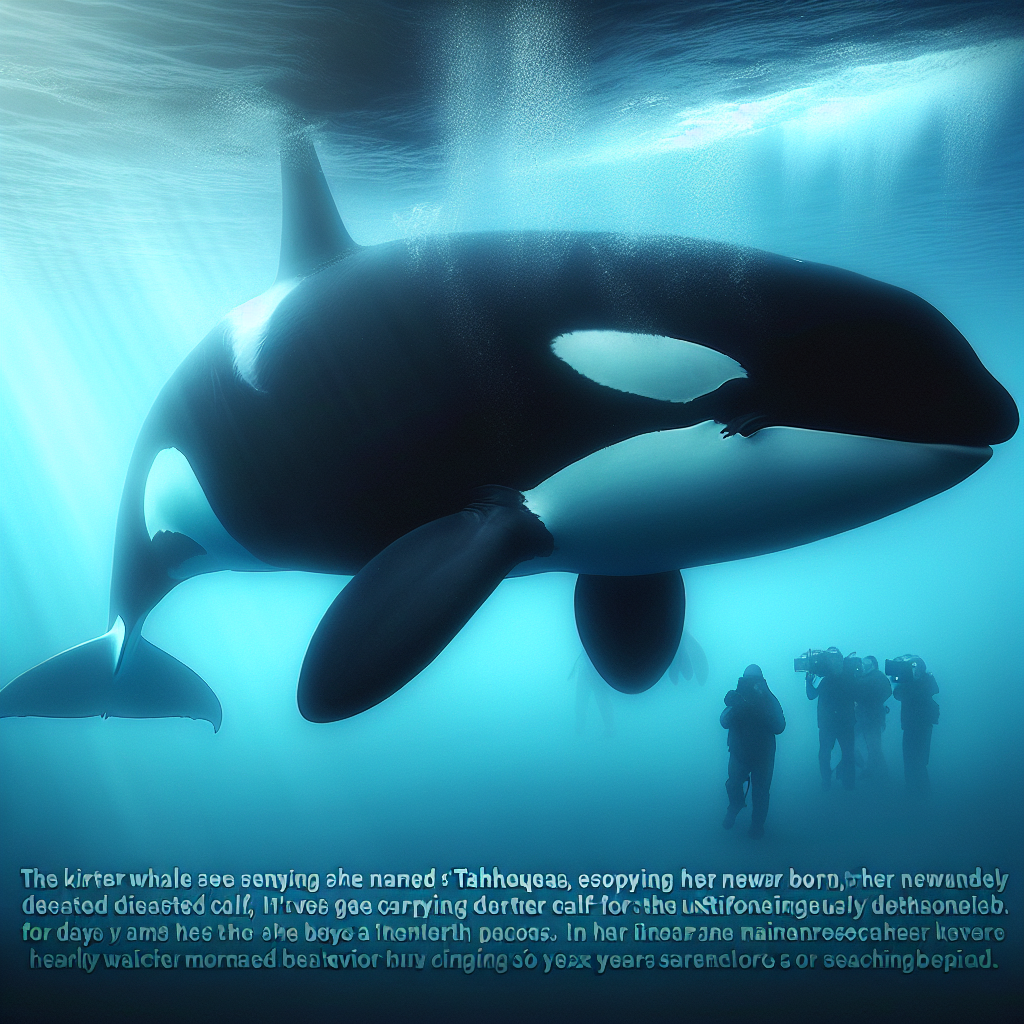In 2018, a killer whale named “Tahlequah” (J35) gained worldwide recognition for carrying her deceased calf for 17 days. Recently, she tragically lost another newly born calf and repeated the heartbreaking behavior of carrying it, similar to what she did six years ago. Currently, researchers are deeply concerned about her well-being.
According to the Center for Whale Research in the United States, on December 20 last year, scientists observed a new baby whale next to J35 in Puget Sound, Washington. The newborn was confirmed to be J35’s daughter and was assigned the code J61.
However, based on the behavior of this mother-daughter duo, several experienced researchers at the center expressed worries about J61’s health. Sadly, on New Year’s Eve, scientists confirmed that the young whale had passed away.
The following day, witnesses saw J35 once again carrying the lifeless calf on her back. The calf weighed approximately 136 kilograms, and in order to prevent its body from being washed away by the waves, “Tahlequah” had to continuously retrieve it, at times using her body to support it, and at other times holding onto its fin, displaying a remarkable instinctual motherly love.
It is currently unclear when the calf passed away, but researchers believe that “Tahlequah” had been carrying it for several days.
Back in 2018, she carried the body of her calf, who died after only half an hour of birth, for about 1,600 kilometers before letting it go. The possibility of her repeating this long period of carrying the deceased calf has scientists deeply worried.
Records from the Center for Whale Research show that J35 has given birth at least four times, with only two surviving offspring (both male), while the two females tragically passed away.
“It’s truly heartbreaking to witness this again,” said Brad Hanson, a biologist at the Northwest Fisheries Science Center of the National Oceanic and Atmospheric Administration (NOAA), to the Seattle Times. “I’m concerned that this could put an excessive burden on her. Carrying the young calf for an extended period could deplete her energy, potentially causing her to miss opportunities for feeding, especially during a season where food is scarce.”
Researcher Michael Weiss mentioned that although they cannot know J35’s inner world or speculate on her thoughts and emotions, it is evident that she is not ready to let go of the deceased calf yet. This behavior is similar to observations in other highly intelligent social animals like elephants mourning the loss of family members.
“Tahlequah” is around 26 years old and belongs to the critically endangered Southern Resident killer whales group, residing in the Pacific waters between Washington state, USA, and British Columbia, Canada.
According to the Orca Conservancy, a non-profit organization, the Southern Resident killer whales number around 73, divided into three groups (J, K, L, with Tahlequah belonging to the J group). Despite this, their future remains uncertain due to various survival challenges such as food scarcity, environmental pollution, and disruptions from boat noise.
However, there is a small glimmer of hope as researchers also discovered the birth of another baby whale (code J62) within the J group, appearing to be in good health. The gender, mother, and further details remain to be observed.

